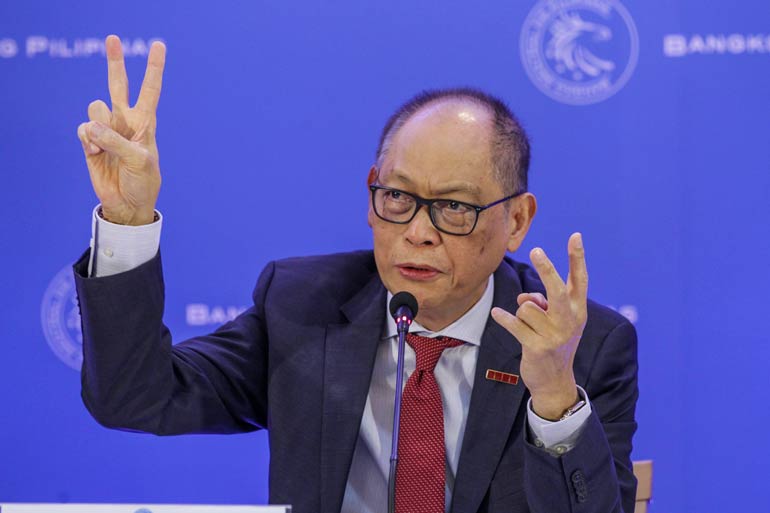
THE Philippine central bank has infused P1.4 trillion into the financial system as part of measures to support the economy amid the coronavirus crisis, Governor Benjamin E. Diokno said.
“Overall, the total amount of additional liquidity injected into the system from these collective measures is estimated at P1.4 trillion, equivalent to 7.3% of GDP (gross domestic product),” Mr. Diokno said in a speech at Standard Chartered Bank’s ASEAN Webinar series on Friday.
Domestic liquidity or M3 — which is considered to be the broadest measure of money supply — rose by an annual 14.5% in July to about P13.6 trillion. This was a tad slower than the 14.9% expansion in June.
Mr. Diokno said the Bangko Sentral ng Pilipinas (BSP) knew it had to make “decisive and immediate actions” as early as the first quarter when the coronavirus disease 2019 (COVID-19) outbreak was starting.
“We identified four critical functions within our scope that are imperative to keep the economy afloat: ensuring that sufficient liquidity is circulating in the system; shoring up market confidence and cushioning the slowdown of economic activity; sustaining financial stability and extending relief to financial institutions; and promoting access to and delivery of financial services,” he said.
The central bank has cut policy rates by 175 basis points (bps) this year to help stimulate the economy. This reduced the overnight reverse repurchase, lending, and deposit facilities to record lows of 2.25%, 2.75%, and 1.75% respectively.
The BSP also lowered the reserve requirement for big banks and nonbank financial institutions with quasi-banking functions by 200 bps to 12%. This was followed by a 100-bp reduction in the reserve requirement of thrift and rural banks to 3% and 2%, respectively.
Mr. Diokno also said the central bank has also modified supervisory regulations to encourage lending support to small businesses that are vital to the economy.
The BSP has allowed banks to count their loans to micro-, small-, and medium-sized enterprises (MSMEs) as part of compliance with BSP’s reserve requirements. This is aside from reducing the credit risk weight for these loans.
“As a result, we have seen a 971% growth in the average daily balance of banks’ loans to MSMEs from April to August 2020,” Mr. Diokno said.
He said the central bank is ready to deploy more measures when the need arises.
“Still, our toolkit is far from exhausted, and we stand ready to do more if needed,” Mr. Diokno added.
The Monetary Board will hold its fifth rate-setting meeting on Oct. 1.
Mr. Diokno earlier said the current policy stance might remain unchanged for the next few quarters because the central bank has already moved in anticipation of the pandemic’s economic fallout.
Analysts said the central bank would keep its prudent pause, which started when it kept policy rates unchanged at its Aug. 20 rate-setting meeting.
“As mentioned by Gov. Diokno, they have released P1.4 trillion in liquidity already, and that’s more than a fourth of the national budget. I believe that they will wait, maybe until next year before moving or cutting again,” UnionBank of the Philippines, Inc. Chief Economist Ruben Carlo O. Asuncion said in a text message.
Rizal Commercial Banking Corp. Chief Economist Michael L. Ricafort said reserve requirements are also likely to be unchanged although further easing in either rates or banks’ reserves could not be completely ruled out.
“Any additional monetary easing measures would somewhat make up for limited funds for any additional fiscal stimulus,” he said.
President Rodrigo R. Duterte signed the P165-billion Bayanihan to Recover as One Act (Bayanihan II) last week. This is a sequel to the P275-billion Bayanihan I, which was the government’s initial response to the crisis. — Luz Wendy T. Noble
